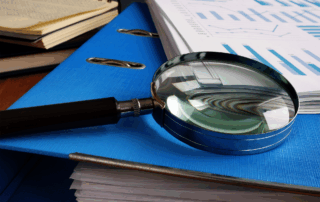The SECURE 2.0 Act, passed in late 2022 and now in active rollout through 2025, is reshaping the landscape of workplace retirement planning. Designed to expand access, modernize plan design, and improve financial preparedness, the law introduces over 90 new provisions—many of which are now surfacing in HR departments across the country.
Automatic Enrollment Takes Effect
One of the headline mandates is automatic enrollment in new 401(k) and 403(b) plans, starting in 2025 for employers launching plans after January 1. New employees will be automatically enrolled at 3%, with annual increases up to 10%. While employers can still opt out for legacy plans, this provision requires adjustments to payroll systems and employee communications.
Student Loan Matching
SECURE 2.0 also introduces a groundbreaking feature: student loan matching contributions. This allows employers to treat student loan repayments as elective deferrals for matching purposes. Employees who prioritize loan repayment over retirement contributions can now still receive a match—helping younger workers build retirement savings earlier.
Emergency Savings Integration
Another major development is the option to create emergency savings accounts linked to retirement plans. Eligible employees can contribute up to $2,500 to these accounts, which allow penalty-free withdrawals and foster financial resilience. This benefit is particularly attractive for hourly and lower-income workers who may face liquidity challenges.
Roth Expansion and Flexibility
SECURE 2.0 expands Roth options, including Roth SEP and SIMPLE IRAs, and removes required minimum distributions (RMDs) for Roth accounts in qualified plans. Employers offering Roth matching must now navigate tax withholding nuances and update plan documents accordingly.
HR & Payroll Challenges
Implementing SECURE 2.0 isn’t just about compliance—it requires meaningful coordination across departments. HR leaders must:
- Update plan documents and employee handbooks
- Integrate changes with payroll systems
- Train managers on eligibility and enrollment
- Communicate benefits clearly to new hires and existing staff
Many companies are partnering with recordkeepers and benefits consultants to manage the transition smoothly and ensure employees understand the expanded options available.
Strategic Opportunities
While SECURE 2.0 introduces complexity, it also opens doors. Employers can now build more inclusive retirement plans, engage younger employees, and align financial wellness with broader workforce objectives.
In short, SECURE 2.0 isn’t just legislative housekeeping—it’s a strategic pivot point. Employers who act now to implement its provisions thoughtfully will not only stay compliant but earn loyalty and trust from the next generation of savers.
For more Employee Benefits resources, contact INSURICA today.
Copyright © 2025 Smarts Publishing. This is not intended to be exhaustive nor should any discussion or opinions be construed as legal advice. Readers should contact legal counsel or an insurance professional for appropriate advice.
About the Author
Share This Story
Related Blogs
FERPA and Data Privacy Risks: What Schools Should Know
FERPA and data privacy risks have become increasingly important issues for schools to understand and address. FERPA—the Family Educational Rights and Privacy Act—is a federal law that protects the privacy of student education records. However, as schools collect and store more sensitive data, FERPA and data privacy risks are also evolving. To stay compliant and protect students, school administrators must understand the law, recognize common risks, and implement practical solutions.
Group Health Premiums on the Rise: What Employers Need to Know
In 2025, rising group health premiums are becoming a central concern for employers. Carriers like UnitedHealth, Anthem, and CVS Health have issued projections showing significant cost increases—driven by escalating claims severity, specialty drug costs, and continued labor shortages across provider networks.
SECURE 2.0 Implementation: A New Era in Retirement Planning
The SECURE 2.0 Act, passed in late 2022 and now in active rollout through 2025, is reshaping the landscape of workplace retirement planning. Designed to expand access, modernize plan design, and improve financial preparedness, the law introduces over 90 new provisions—many of which are now surfacing in HR departments across the country.








